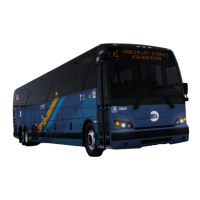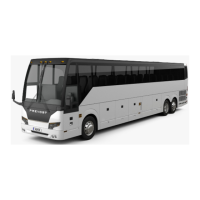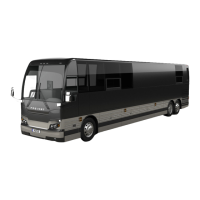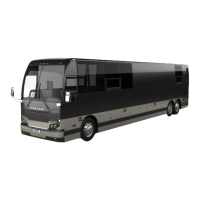SECTION 22: HEATING AND AIR CONDITIONING
DOB 1300-1556 | X3-45 Commuter PA-1648 Maintenance Manual First release Oct 2020
6.7.6 Charging System
When a system has been opened or if there are
any questions about the air or moisture in the
system, evacuate the system. Charging of an
evacuated system may be accomplished by
forcing liquid R-134a directly into the receiver
tank. This may be accomplished by placing the
refrigerant cylinder upside down on a scale with
the valves at the bottom. This ensures that only
liquid will enter the receiver tank.
When charging an empty system, weigh the
amount of refrigerant put into the system. This
will eliminate any possibility of overfilling.
A Central HVAC System nominal charge
requires 24 pounds. If the vehicle is equipped
with the overhead compartment A/C system, a full
charge requires an additional 2 lbs.
After charging the system, it may be necessary to
add refrigerant. Vapor state refrigerant addition
will be done from the suction side of the
compressor while the compressor is in operation.
1. Using connector C24 and C44, energize and
open the liquid solenoid valves (driver’s unit,
passengers’ unit and overhead compartment
units). To do so, uncap and connect male
and female connector housings of C24
together for the passengers’ area (located
on the HVAC module in the evaporator
compartment) or C44 for the driver's area
(located on the ceiling of the spare wheel
compartment).
2. Backseat (stem out) the two compressor
shutoff valves (FIGURE 56).
MAX TORQUE: 12 lb-ft (16 Nm)
3. Install A/C pressure gages at the
compressor shutoff valves service ports
(item 4, FIGURE 56).
4. Midseat the two compressor shutoff valves.
5. Ensure that the two receiver service valves
are in back seated position (stem out).
6. Remove the cover cap from the service port
on the receiver inlet service valve.
7. Attach an evacuated charging hose (purged
from air and moisture) to the R-134a tank.
8. Connect the evacuated charging hose to the
service port on the receiver tank inlet shutoff
valve.
9. Open the R-134a tank valve. The refrigerant
supply tank should be kept warm to allow
more refrigerant to be transferred into the
system. Use a heating blanket for this
matter.
10. Midseat the receiver inlet shutoff valve. The
R-134a will now enter the system.
11. The proper charge of R-134a is 24 lbs, to
this, add 2 lbs for overhead compartments
A/C system. When the scale indicates this
amount of charge, backseat the receiver
valve and close the R-134a tank valve.
12. Disconnect the charging hose. Replace the
cover caps.
13. Disconnect C24 & C44.
14. The system is now ready for operation.
CAUTION
The evacuation of the system must be made
by authorized and qualified personnel only.
Refer to local laws for R-134a recuperation.
6.8 LIQUID REFRIGERANT RECOVERY
Liquid recovery is performed the same way as
standard vapor recovery except that liquid
recovery will be done by connecting to the high
side of the system. Recovering liquid is ideal for
recovering large amounts of refrigerant.
1. Energize driver’s unit and passengers’ unit
(main HVAC system) section liquid solenoid
valve. To do so, connect male and female
connector housings of C24 together for the
passengers’ area (located on the HVAC
module in the evaporator compartment) and
C44 for the driver's area (located on the
ceiling of the spare wheel compartment).
During normal use, both male and female
housings of connector C24 or C44 are kept
unplugged.
2. Backseat (normal operating position) the
compressor suction and discharge shutoff
valves.
MAX TORQUE: 12 lb-ft (16 Nm)
3. Connect manifold gages on the service port
and then turn the compressor shutoff valves
forward just enough to enable a visual check
of the suction and discharge pressure.
4. Make sure the receiver outlet shutoff valve is
in back seated position (normal operating
position). Connect the recovery unit hose to

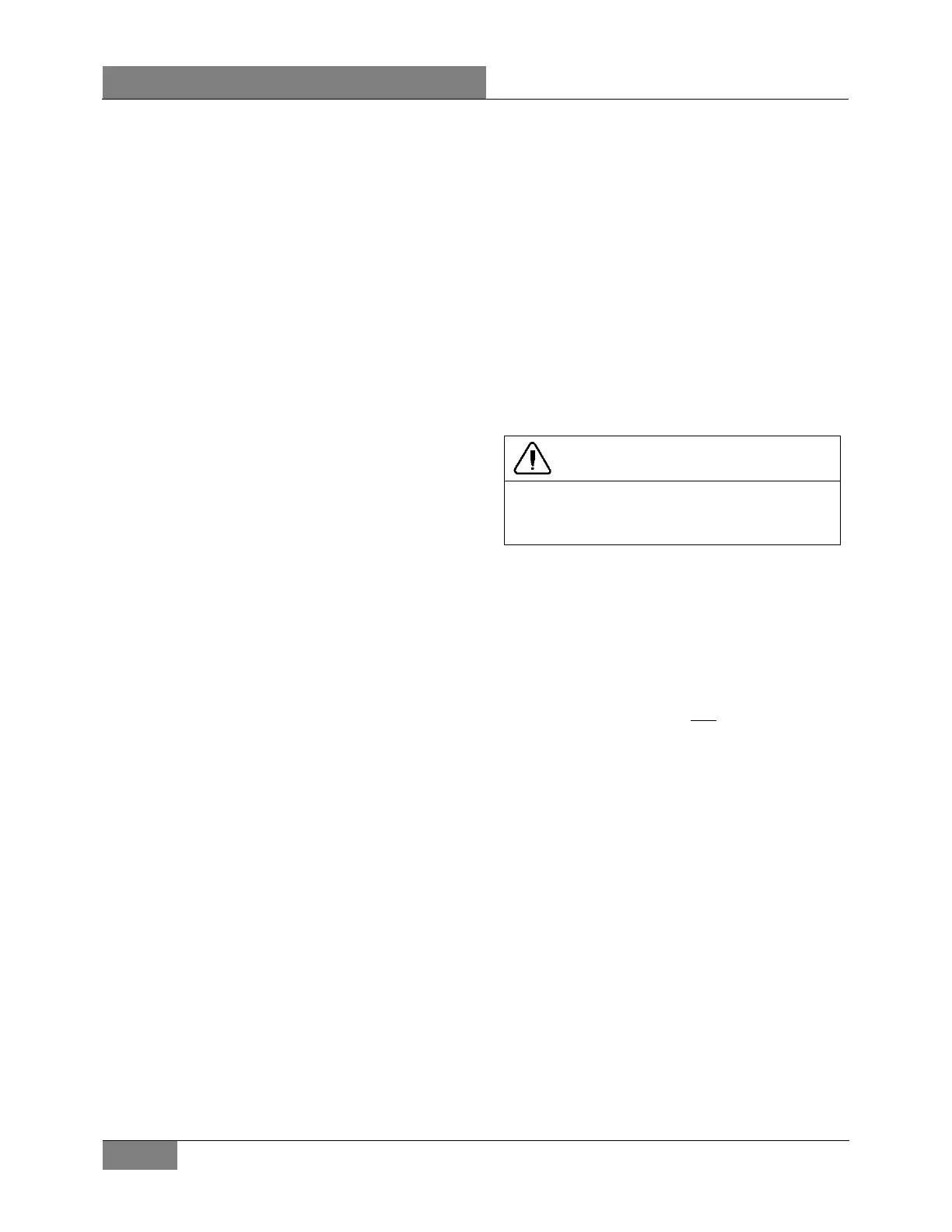